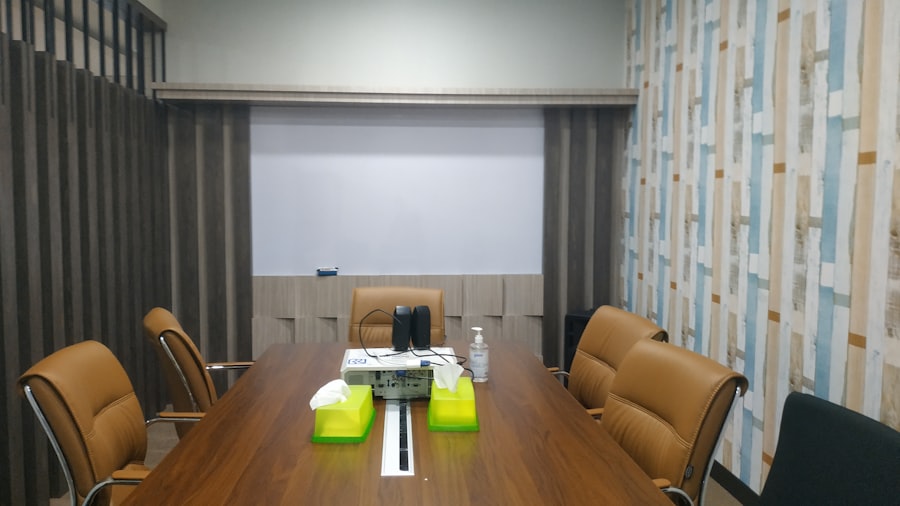The concept of flow, as I have come to understand it, is a state of complete immersion in an activity where time seems to dissolve, and I become fully engaged in what I am doing. This psychological phenomenon, first identified by psychologist Mihaly Csikszentmihalyi, is characterized by a sense of effortless involvement and energy. When I am in a state of flow, I often lose track of time and my surroundings fade away, allowing me to focus entirely on the task at hand.
This experience is not only enjoyable but also highly productive, as I find that my creativity and problem-solving abilities are heightened. To achieve this state, I have learned that certain conditions must be met. The task I am engaged in should ideally be challenging yet attainable, striking a balance that keeps me motivated without overwhelming me.
Additionally, clear goals and immediate feedback are crucial components that help me stay on track. When I can see my progress and understand what I need to do next, I am more likely to maintain that flow state. Understanding these elements has been instrumental in my journey toward maximizing productivity and satisfaction in both my personal and professional life.
Key Takeaways
- Flow is a mental state of complete focus and immersion in a task, leading to increased productivity and satisfaction.
- Identifying similar tasks can help in grouping them together for efficient completion and reduced mental switching.
- Prioritizing similar tasks based on urgency and importance can help in managing time effectively.
- Creating a task list can provide a clear overview of the work that needs to be done, reducing mental clutter.
- Allocating specific time slots for similar tasks can help in maintaining focus and avoiding procrastination.
Identifying Similar Tasks
One of the first steps I take in enhancing my productivity is identifying similar tasks that can be grouped together. This process involves analyzing my to-do list and recognizing patterns in the types of activities I need to complete. For instance, I might notice that several tasks require similar skills or resources, such as writing emails, drafting reports, or conducting research.
By clustering these tasks, I can streamline my efforts and minimize the cognitive load associated with switching between different types of activities. In my experience, this approach not only saves time but also helps me maintain focus. When I tackle similar tasks consecutively, I find that I can build momentum and maintain a rhythm that keeps me engaged.
This method also allows me to leverage my existing knowledge and skills more effectively, as I can apply what I’ve learned from one task to another. By identifying and grouping similar tasks, I create a more efficient workflow that ultimately leads to a greater sense of accomplishment.
Prioritizing Similar Tasks

Once I have identified similar tasks, the next step is prioritizing them based on urgency and importance. This process requires me to evaluate each task’s impact on my overall goals and deadlines. I often use a simple matrix to categorize tasks into four quadrants: urgent and important, important but not urgent, urgent but not important, and neither urgent nor important.
This visual representation helps me clarify which tasks deserve my immediate attention and which can be scheduled for later. In prioritizing similar tasks, I also consider the energy levels required for each activity. Some tasks may demand more mental effort than others, so I try to align them with my peak productivity times throughout the day.
For example, if I know that I am most alert in the morning, I will tackle the more challenging writing tasks during that time while reserving simpler administrative duties for the afternoon when my energy may wane. This strategic approach not only enhances my efficiency but also ensures that I am working on the right tasks at the right times.
Creating a Task List
Creating a comprehensive task list is an essential part of my productivity strategy. This list serves as a roadmap for my day-to-day activities and helps me stay organized amidst the chaos of competing priorities. When compiling my task list, I make sure to include all identified similar tasks along with their respective deadlines and priority levels.
This clarity allows me to visualize what needs to be accomplished and provides a sense of direction. I also find it helpful to break larger tasks into smaller, manageable steps. By doing so, I can celebrate small victories along the way, which keeps me motivated and engaged.
For instance, if I have a project that requires extensive research and writing, I will break it down into specific milestones such as gathering sources, drafting an outline, and writing individual sections. This method not only makes daunting projects feel more achievable but also allows me to track my progress more effectively.
Allocating Time for Similar Tasks
Time allocation is another critical aspect of my productivity strategy. Once I have created my task list, I dedicate specific time blocks for each group of similar tasks. This practice helps me establish a routine and ensures that I am giving adequate attention to each area of my work.
By scheduling time for similar tasks, I can create a focused environment where distractions are minimized, allowing me to dive deeper into my work. I often use techniques like time blocking or the Pomodoro Technique to structure my work sessions. For example, I might set aside 25 minutes for focused writing followed by a 5-minute break to recharge.
This approach not only enhances my concentration but also prevents burnout by ensuring that I take regular breaks throughout the day. By allocating time effectively for similar tasks, I create a balanced workflow that maximizes productivity while maintaining my well-being.
Eliminating Distractions

Identifying Distractions
In my quest for productivity, eliminating distractions has proven to be one of the most challenging yet rewarding aspects of my routine. Distractions can come in many forms—be it notifications from my phone, background noise, or even the temptation to check social media.
Creating a Focused Work Environment
To combat these interruptions, I have developed strategies that help me create a focused work environment. One effective method I’ve adopted is setting boundaries around my workspace. When I’m working on similar tasks that require deep concentration, I turn off notifications on my devices and use apps that block distracting websites during designated work periods.
Reaping the Rewards
By consciously eliminating distractions, I can immerse myself in the flow state more easily and accomplish more in less time.
Setting Clear Goals
Setting clear goals is fundamental to achieving success in any endeavor. When I approach my work with specific objectives in mind, it becomes easier to stay motivated and measure progress. For each group of similar tasks I’ve identified, I establish both short-term and long-term goals that guide my efforts.
These goals serve as benchmarks against which I can evaluate my performance and adjust my strategies as needed. I often use the SMART criteria—Specific, Measurable, Achievable, Relevant, Time-bound—to formulate my goals effectively. For instance, instead of simply stating that I want to “write more,” I might set a goal to “complete three blog posts by the end of the week.” This level of specificity not only clarifies what needs to be done but also provides a sense of urgency that propels me forward.
By setting clear goals for each group of similar tasks, I create a roadmap that keeps me focused on what truly matters.
Using Time Management Techniques
Incorporating various time management techniques into my routine has significantly enhanced my productivity levels. Techniques such as the Eisenhower Matrix or the Getting Things Done (GTD) method allow me to prioritize effectively and manage my workload efficiently. By applying these frameworks to my task list of similar activities, I can ensure that I’m focusing on what truly matters while minimizing overwhelm.
For instance, using the GTD method encourages me to capture all tasks in one place and then process them systematically. This approach allows me to clarify what needs immediate attention versus what can wait until later. Additionally, I’ve found value in using digital tools like task management apps that help me organize and track my progress visually.
By leveraging these time management techniques, I’m able to navigate through my workload with greater ease and confidence.
Taking Breaks
Taking breaks is an essential component of maintaining productivity over the long term. While it may seem counterintuitive to step away from work when there are still tasks to complete, I’ve learned that regular breaks actually enhance focus and creativity. When I’m engaged in similar tasks for extended periods without interruption, fatigue can set in quickly, leading to diminished returns on my efforts.
I make it a point to schedule short breaks between work sessions—whether it’s a quick walk around the block or simply stepping away from my desk for a few minutes. During these breaks, I allow myself to recharge mentally and physically before diving back into my work. This practice not only helps prevent burnout but also fosters a renewed sense of energy when I return to tackling similar tasks.
Reflecting on Progress
Reflection is an integral part of my productivity journey. At the end of each day or week, I take time to assess what I’ve accomplished regarding the similar tasks I’ve worked on. This reflection process allows me to celebrate successes while also identifying areas for improvement.
By reviewing what went well and what could have been done differently, I’m able to refine my approach moving forward. During these reflection sessions, I often journal about my experiences and insights gained from completing various tasks. This practice not only reinforces learning but also helps me stay accountable to myself and my goals.
By taking the time to reflect on progress regularly, I’m able to maintain a growth mindset that encourages continuous improvement.
Adjusting and Adapting
Finally, adjusting and adapting is crucial in navigating the ever-changing landscape of work and personal responsibilities. As new tasks arise or priorities shift, I’ve learned the importance of remaining flexible in my approach. While having a structured plan is beneficial, being open to change allows me to respond effectively to unexpected challenges or opportunities.
When faced with new information or shifting deadlines, I reassess my task list and make necessary adjustments based on current circumstances. This adaptability ensures that I’m always working on what matters most at any given moment while still keeping an eye on long-term goals. By embracing change rather than resisting it, I’ve found that I’m better equipped to handle whatever comes my way while maintaining productivity and focus on similar tasks.
In conclusion, mastering productivity through understanding flow states and implementing effective strategies has transformed how I approach work and life challenges alike. By identifying similar tasks, prioritizing them wisely, creating structured plans, eliminating distractions, setting clear goals, utilizing time management techniques, taking breaks for rejuvenation, reflecting on progress regularly, and remaining adaptable in the face of change—I’ve cultivated an environment where productivity thrives alongside personal fulfillment.
If you are interested in learning more about essential lessons for tech entrepreneurs, you should check out this article. It provides valuable insights and tips for those looking to succeed in the tech industry. By grouping similar tasks and maintaining a state of flow, entrepreneurs can increase their productivity and efficiency, ultimately leading to greater success in their ventures.




